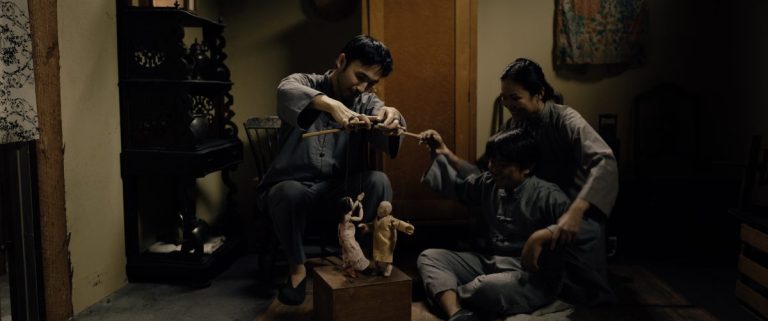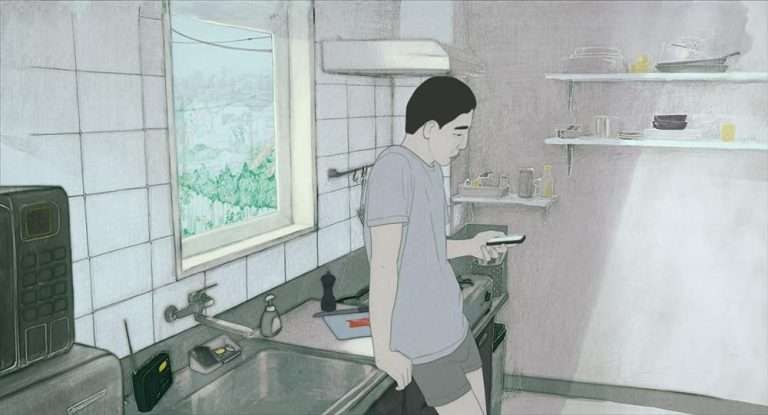Ti West’s “X”: For the great actresses of 1960s Hollywood, the already considerable “humiliation” of aging was often coupled with the ridicule of accepting parts considered degrading in order to continue working. In particular, the role of the gorgon, or hag (mainly in horror and mainly in B movies), became a recurring one for female performers approaching age 50. In a cinematic wave commonly labeled as “Hagsploitation,” the aging woman came to be juxtaposed with demons, psychopaths, and alien creatures among the main protagonists of the cinematic horror imagery. The narrative of female old age then became synonymous with decline, decadence, shame, and ridicule. And for women, declining desirability (and loss of fertility) meant the fading of personal value in society as much as in the film industry.
Setting the trend was the unexpected success of What Ever Happened to Baby Jane?, a renowned psycho-biddy film starring Bette Davis and Joan Crawford. Indeed, the movie ushered in a proper genre whose most cartoonish and mocking features were later lamentably appropriated. Among the many examples of early hags are Joan Crawford in Strait-Jacket (1964), Bette Davis in Hush, Hush… Sweet Charlotte (1964), Tallulah Bankhead in Die! Die! My Darling! (1965), and Susan Strasberg in Taste of Fear (1961).
The decay of the female body imposed itself as something whose mere existence became, at least in Western interpretation, a shared source of cinematic disgust. And, although cinema has slowly distanced itself from such a blatant portrayal of old age as an unabashedly repulsive trait, the wise older man has continued to be contrasted with the resentful or just plain mean older woman.
In “X,” a 2022 horror film directed by Ti West, the director appropriates the stylistic devices proper to hagsploitation in a conscious and provocative exploitation of the stigma about female elderliness. The elderly antagonist, Pearl (played by Mia Goth), is rancorous because she is old and is cruel to what is not. Owning a dim farmhouse with her husband Howard (Stephen Ure), she hosts a group of lusty youngsters who, unbeknownst to them, plan to use the location to shoot an arthouse pornographic film. The project accommodates the assumption that an elderly couple has neither the mental faculty to notice the misuse of their property nor to be any more able to understand what their real intentions are (being the project proper to a sphere of life, the sexual sphere, deemed improper for the old pair).
In particular, two aspects of Pearl’s character are noteworthy. The first is the performer Mia Goth, who was only twenty-nine years old at the time. In an unusual fashion, the elderly Pearl is played not by an actual woman of advanced age but by the young actress who also plays the role of the protagonist, Maxine. On the one hand, the device emphasizes the dual relationship between Pearl and Maxine; on the other hand, it renders the hag the result of intense prosthetic makeup and not the mere consequence of aging. This is related to the second aspect, namely Pearl’s aesthetic characterization, which reflects a monsterish and caricatured ideal of old age rather than a realistic portrayal.
Moreover, rather than with any particularly violent murder or jump scare, Ti West exploits the taboo of female desire in later life as the main horrific element. Taboo is doubly prompted by the characterization of Pearl as bisexual, thus interested in approaching both guys and girls in the company. As icing on the cake, X’s final erotic sequence features Pearl herself, in stark contrast to the earlier sequences devoted to the shooting of the X-movie.
The portrayal of seniority in “X” is an example of a new way of approaching the topic that has been introduced only in recent years. Actually, the 2018 report “Still Rare, Still Ridiculed: Portrayals of Senior Characters On Screen in Popular Films from 2015 and 2016” by the USC Annenberg Inclusion Initiative demonstrates how, as of 2016, ageism still dominated the cinematic landscape. Across the 100 highest-grossing films of that year, just 10 percent of the speaking characters on screen were over the age of 60. Of these, women consisted of less than a third (including only one with a primary role), and none identifiable as LGBT. In any case, the older woman mostly starred as a comic cliché, an instrumental and supporting character, or (obviously) the rancorous monster to be taken down by the new generations.
Considering the trend as a reference for recent years as well, the character of Pearl, who is female, older, and not heterosexual, is virtually nowhere else to be found in commercial cinema. And it is the awareness of how alienating this characterization can be to the contemporary viewer that the film plays with.
For Pearl, already prone to aggression and violence (implied in her dialogues with her husband and later explicated in the prequel devoted to her), the display of youth, freedom, and libido can only be met with two approaches: the “punitive” approach, or, via an unprecedented twist, the “admission” approach. Specifically, admittance would intend Pearl’s “integration” into the young circle. Implicitly, Pearl gives the movie troupe a chance to be spared at the price of making her feel desirable again.
The innate human propensity to interpret older people as repulsive thus sets the film back on the tried-and-true punitive approach proper to the slasher, just as Pearl adopts the typecasting of the classic genre villain. Overall, “X” toys with the imagery of the evil hag, basing her malignity on the inevitability of old age and the specious resentment that follows. As the older woman is primarily devalued for her loss of desirability and consequently denied the sexual sphere, the film introduces the antagonist as monstrous in how she craves intimacy despite her aesthetic decay. The early depiction of Pearl as a malevolent person is based on her feeling of desire despite no longer possessing the social eligibility to do so.
The centrality of the aspects of sexuality and youthfulness are then also reflected in the protagonist, Maxine. Maxine is, as mentioned, a pornographic actress in total dualistic opposition to Pearl’s persona. She is the daughter of a preacher and an emblem of the American sexual liberation that began in the late 1960s, on which her very livelihood is grounded.
For a young woman like her, there is no worse horror than seeing her possible future reflected in Pearl’s very real present, who can only be the monster of Maxine’s story. Pearl means the loss of sex appeal in a sex-based society in the making and the regret of the lack of freedom of the generation prior to the one that is still reclaiming its own. Furthermore, Pearl serves as a sobering reminder of how restricted women’s true liberation remains in a culture that continues to see them as mere bodies.
Even as an entertainment film, “X” reflects on how much the cinematic depiction of aging remains an acutely effective disruptive element on the viewer by virtue of its direct threat to the audience. Old age can almost be seen as a community monster in a society that denies, stigmatizes, and attempts to conceal the naturalness of it. And as much as aging affects both sexes, it appears as a condition that finds relief only in death for the female. The cinematic hag is but the commercialization of this shared animosity, mirrored in movies as movies have always mirrored the fears of society.
This applies to the opposite, namely, cinema’s ability to exorcise, or help exorcise, these fears from the collective imagination. “X,” while not attempting to untether old age from its stigma, takes a first step by more self-consciously exploiting it and moving beyond the more superficial portrayal of the evil hag. With Pearl, Ti West brings to the screen a character and not, for the umpteenth time, a stereotype, in what may be an early opportunity to give pause for thought about the still too pervasive dismissal of female elderhood on the big screen.








